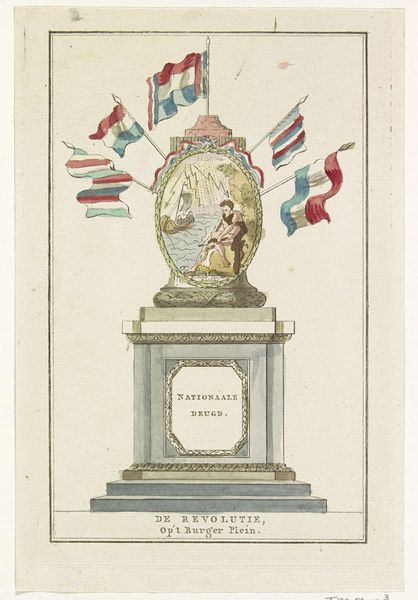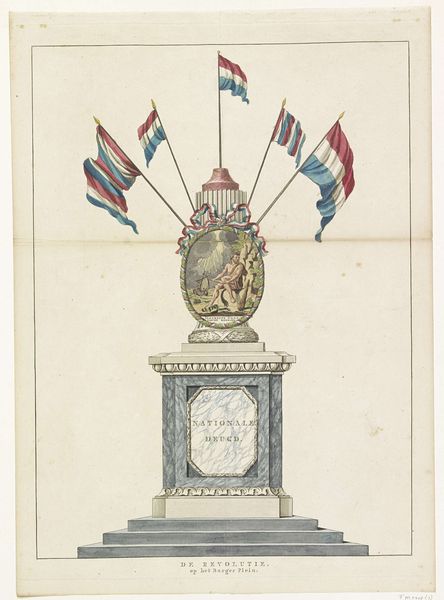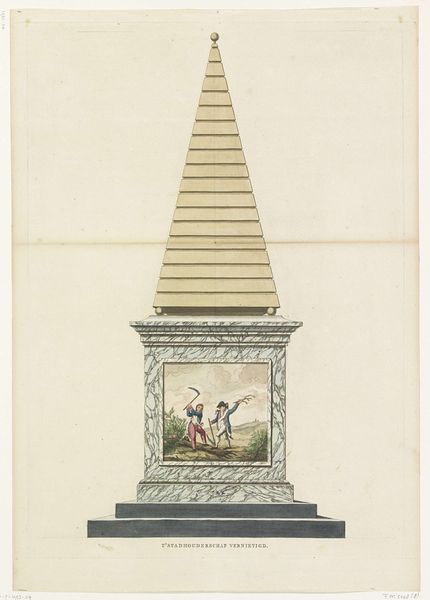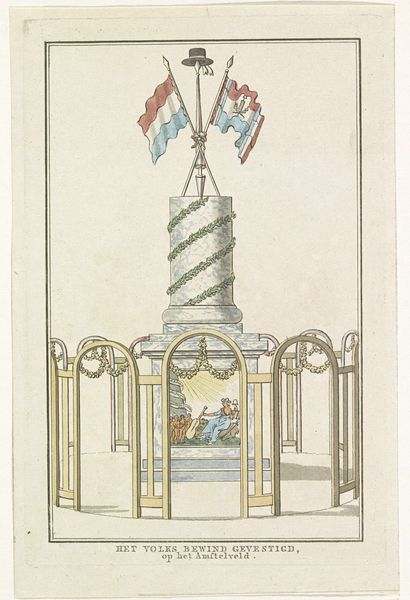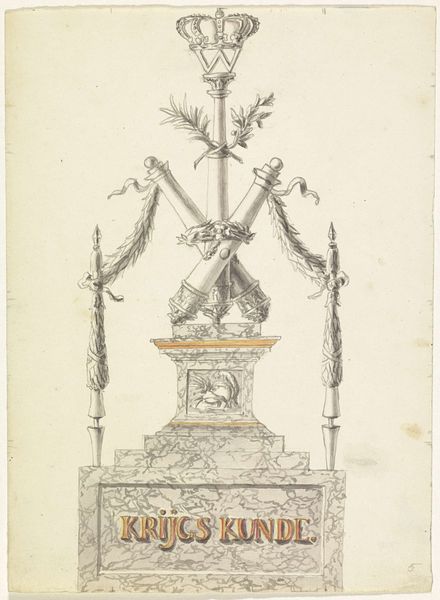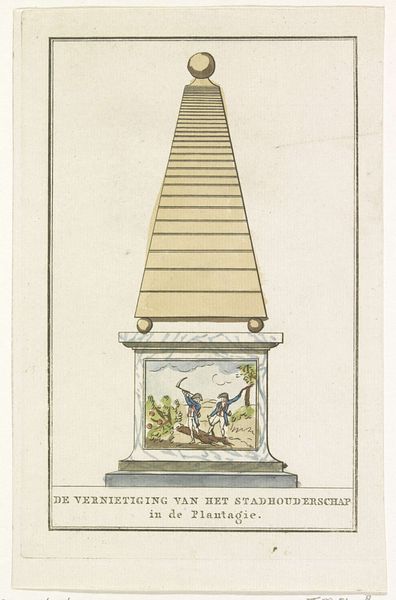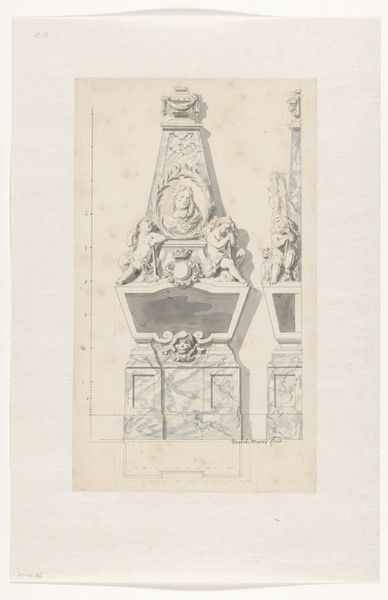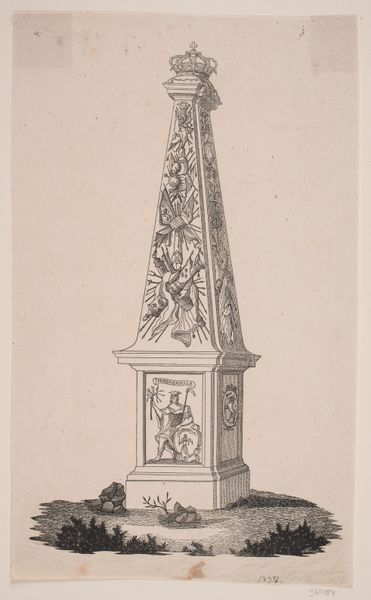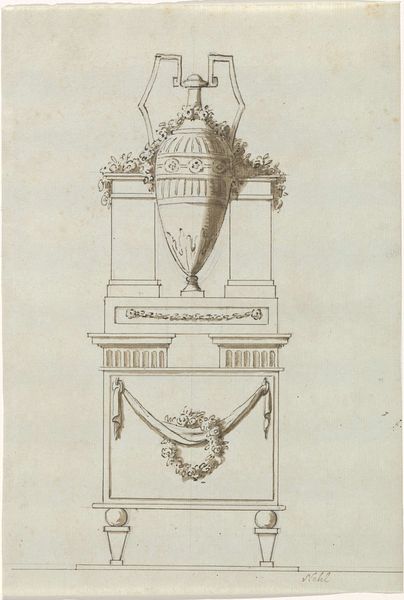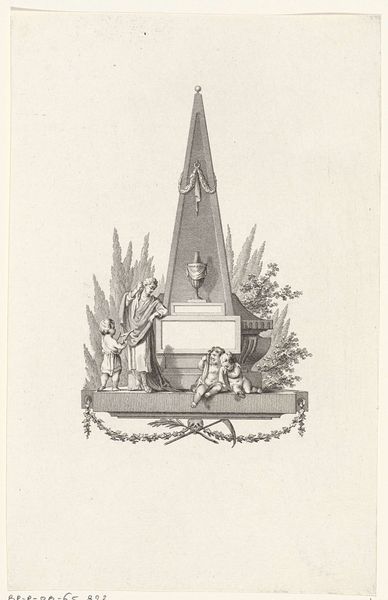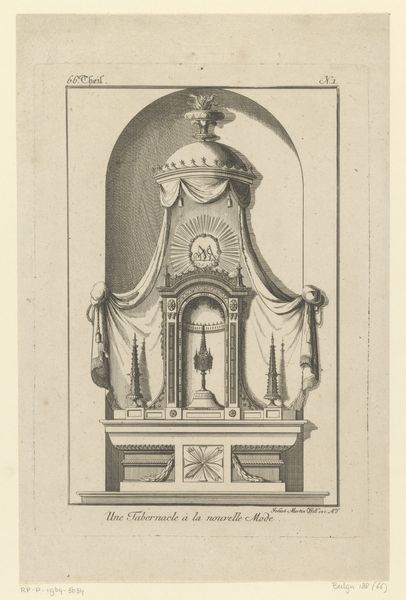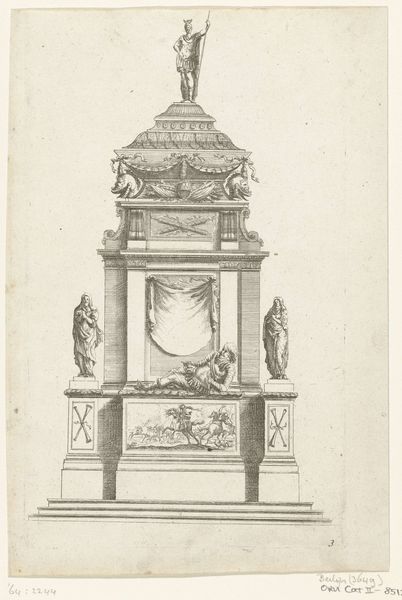
watercolor
#
neoclacissism
#
blue ink drawing
#
watercolor
#
historical fashion
#
cityscape
#
watercolour illustration
#
history-painting
Dimensions: height 275 mm, width 188 mm
Copyright: Rijks Museum: Open Domain
Curator: Let’s take a closer look at “Het Volksbewind Gevestigd, decoratie op het Amstelveld, 1795" by A. (II) Schol. This watercolour piece illustrates a decorated monument in Amsterdam marking a political shift. Editor: My first impression is how fragile it appears. The washes of watercolour lend a fleeting, almost ethereal quality to what should be a very solid, permanent declaration. The lines are delicate and precise. Curator: Indeed. Notice how the structure itself is articulated: the stark geometry of the plinth contrasts with the delicate foliage spiraling around the column, surmounted by flags that seem caught in a perpetual breeze. It speaks to a desire for order expressed through very calculated visual harmony. The symbolism of its structural elements indicates stability. Editor: I'm more interested in the physical reality. What was it made of, this temporary structure? Was it wood, plaster, canvas stretched over frames? The quick, ephemeral nature of such materials clashes intriguingly with the weighty ideals it was meant to represent, and is subtly highlighted in Schol's choice of media. Also how was the artist able to translate reality so easily into such light, almost effortless composition? Curator: The use of watercolour is quite deliberate; think of the Enlightenment’s embrace of rationality and order. The transparency of the washes reinforces this clarity and precision of thought; this reflects a deep commitment to Neoclassical ideals, celebrating form, balance, and reason. The depicted image of seated Lady of Liberty suggests something far beyond. Editor: But who were the actual laborers, the carpenters and artisans, who built this thing, likely under intense pressure and within a constrained budget? How does their often unacknowledged labor interact with the finished "artwork"? Curator: I see it differently. It is not only a record but an idealized vision, a precise configuration to be seen on Amstelveld and perhaps serve to encourage certain societal principles and thought. It presents a unified front, literally framed by the arches. Editor: It certainly provokes deeper thoughts about the relationship between ephemerality and permanence in artistic representation and challenges assumptions that painting must represent real, and immovable power structures. Curator: An interesting contrast you draw there, pointing us back to form as ideology and the ways in which artistic intent is manifested through careful construction and material engagement. Editor: It really makes one ponder about material conditions that produced and have shaped art through generations.
Comments
No comments
Be the first to comment and join the conversation on the ultimate creative platform.
